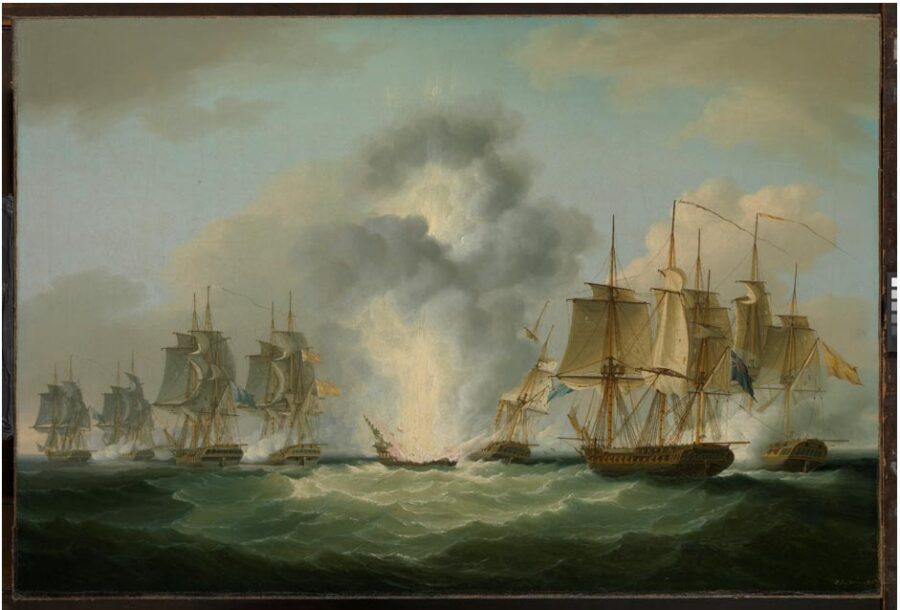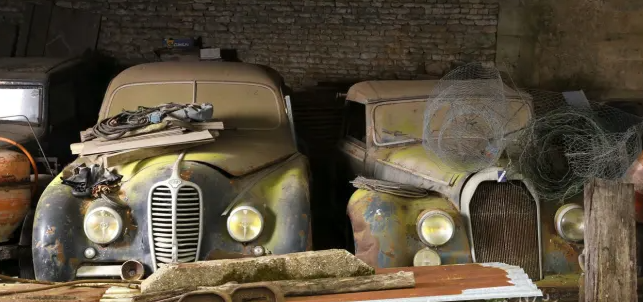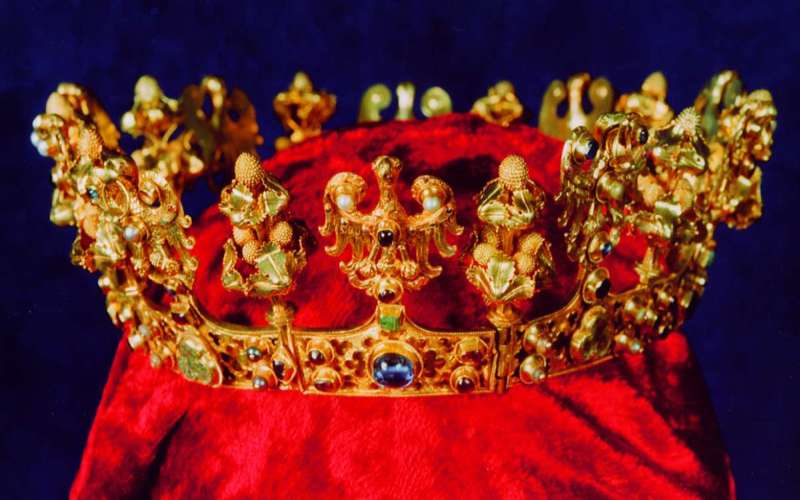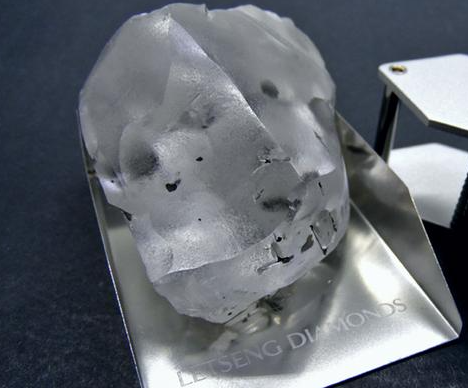There are many reasons people search for lost treasure. Some seek fortune and fame; others seek answers to history’s mysterious questions. The most famous treasure hunters are driven by the thrill of the chase.
The quest for uncovered treasures continues just as it has for thousands of years. Whether it’s using a handheld metal detector or a deep sea discovery vessel, here are some of my favorite stories behind 19 amazing treasures discovered.
Most Famous Treasure Hunters
Mel Fisher
In 1969, American treasure hunter Mel Fisher began searching the sea floor in the Caribbean for the treasure of Nuestra Senora de Atocha. The treasure was finally discovered in July 1985.

After the discovery, the State of Florida claimed it deserved 25% of the riches, and after eight years of litigation, the U.S. Supreme Court ruled in favor of Fisher. In July of 1992, he was awarded rights to the entire treasure.
Heinrich Schliemann
The German businessman Heinrich Schliemann was so obsessed with archaeology, specifically discovering the city of Troy, that he went to great lengths to finance his mission.
Schliemann made a fortune by the time he was 36. Instead of retiring, he set his sights on the discovery of the ancient city of Troy.
A real-life pioneer and excavator, some criticize Schliemann for his careless digging at the historical site at the mound of Troy.
Robert Marx
An expert scuba diver, Robert Marx is best known for discovering more than 5,000 shipwrecks around the world. Others would label him the true father of underwater archaeology.
Marx also re-enacted the voyage of Christopher Columbus on a replica of the ship La Nina.
He claimed to discover the USS Monitor, and the Nuestra Senora de las Maravillas wreck in Grand Bahama. His first discovery, while he lived in Los Angeles, was the SS Winfield Scott, where he recovered several gold coins.
Giovanni Belzoni
Otherwise known as The Great Belzoni, Giovanni was a legendary archaeologist and explorer who was fascinated with Egyptian antiquities.

Belzoni identified the ruins of Berenice near the Red Sea and was the first to enter the Pyramid of Khafre.
His great feat was the seven-tonne bust of Ramesses II and its shipping to England.
Jeff MacKinnon
Born in Canada, Jeff MacKinnon is a third-generation treasure hunter known for finding historical shipwrecks while working with veterans suffering from PTSD.
Tommy Thompson
Famous for discovering over 500 gold coins from the SS Central America ship that sank in 1857. The discovery amounted to about four million dollars worth of gold coins. But lawsuits by insurance companies and investors landed Thompson in jail.
Martin Bayerle
Martin Bayerle is best known for his discovery of the White Star Liner RMS Republic, a ship that sank in 1909. The Republic was, at the time of its sinking, the largest ship to ever sink. Then passed up when the Titanic went down in 1912.
Bayerle has also starred on the History Channel’s “Billion Dollar Wreck” show.
Dr. Lee Spence
As a member of the American Military Museum and Chairman of the Board of the Sea Research Society, Lee Spence is best known for his discovery of the H.L. Hunley and the Georgiana. He also discovered and identified the real Rhett Butler.
As an underwater Archeologist who studies shipwrecks and sunken treasure, Dr. Spence’s work has been funded by the College of Charleston, and the Savannah Ships of the Sea Museum.
Blackbeard
Otherwise known as Edward Teach, the famous English pirate worked the waters of the West Indies and captured treasure for years.
Among his many skills, Blackbeard formed alliances with fellow pirates to block ports in South Carolina and collect ransoms.
Blackbeard was mostly known for raising havoc on the seas and overtaking nearby ships. Then plundering the ship’s cargo. Treasure hunters have studied Blackbeard’s trail of terror across the ocean for clues on where a pirate booty and hidden treasure might be lurking underwater.
Some treasure hunters believe Blackbeard left a secret map leading to his fortune. But it has yet to be found.
Brent Brisben
One of the most famous modern-day shipwreck treasure hunters. Brisben and his father started a shipwreck recovery company called 1715 Fleet in 2010.
Brent and his newly formed 1715 Fleet company purchased the exclusive salvage rights of the historic Spanish 1715 Treasure Fleet from Mel Fisher.
It only took 17 days after purchasing the rights to begin finding treasure. First, a bronze swivel gun was found. Loaded into the bronze gun were 40 silver reales, and 51 gold escudos.
Next, the Brisben treasure hunting crew found the “Pelican in Piety,” valued at nearly $900,000. Brisben and his team recovered millions more in gold coins, including a perfectly conditioned Royal coin minted for King Phillip V.
19 Most Famous and Amazing Treasures Discovered
#1- The Caesarea Sunken Treasure
Divers in the Eastern Mediterranean found sunken artifacts from the Roman Empire submerged over 1,600 years ago.
A cargo ship carrying incredibly well-preserved coins, lamps, metal figures, and statues went down in the harbor of the ancient Roman city of Caesarea. Today the site is near Israel’s Caesarea National Park.
A layer of fine sand covered the artifacts protecting the items and preserving their beauty and historical significance.
Casually Discovered By Divers
The site was discovered when two divers were casually passing the area before Passover holiday. The divers immediately emerged from the water and contacted the Israel Antiquities Authority, where full recovery efforts began.
What the recovery divers found was one of the largest loots of the 19 amazing treasures discovered.
A bronze lamp depicting the sun god Sol, a figurine of the moon goddess Luna and three life-size bronze statues were a few of the items discovered.
The coins bear the image of the emperor Constantine who ruled the Roman Empire from 324 – 337. It’s difficult to put a value on these artifacts; most experts agree they are priceless.
#2 – The Treasure of San Jose
The Treasure of San Jose is estimated to contain gold, silver, and emeralds valued at roughly $17 billion. That’s a billion with a capital ‘B.’ San Jose was a ship in the Spanish Navy, which launched in 1698. The three-masted, 64-gun ship sank in the Battle of Baru in 1708.
On June 8th, 1708, the heavily loaded ship set sail from Portobelo, Panama to Cartagena, Colombia, with a treasure and a fleet of three Spanish warships and 14 merchant ships.
The fleet ran into British warships leading to the Wager’s Action battle.
The Destroyed Ship
The ship contained powder magazines which were detonated during the battle and destroyed the ship. The gold, silver, emeralds, jewelry, and most of the crew went down.
The treasure on board the vessel was collected from the South American colonies and used to finance the war efforts. Only eleven of the 600-person crew survived.
The “Holy Grail of Shipwrecks” was thought to be discovered in 1981 by a group of investors from the United States. Operating under the name ‘Sea Search Armada,’ the group attempted to broker a deal with the Colombian government to conduct full salvage operations at the site but was denied.
The site remains controlled by the Colombian Institute of Anthropology and History, which they work to preserve the site of the shipwreck.
#3 – Black Swan Project
A group called the Odyssey Marine Exploration began an expedition in 2007, which would turn out to be one of the most controversial treasure-hunting tales in modern times.
Labeled the Black Swan Project for secrecy, the discovery and recovery of nearly $500 million worth of gold and silver coins from the bottom of the ocean would go all the way to the US Federal Courts.
It all started in 1804 during the Battle of Cape Santa Maria. Nearly 600,000 gold and silver coins were traveling on the Spanish galleon ship Nuestra Senora de las Mercedes when it was gunned down by the British fleet.

Fast forward to May of 2007, when the Odyssey Marine Exploration announced their discovery of the treasure. The team loaded up nearly 17 tons of gold coins and other artifacts and flew them back to an undisclosed location in Florida.
The Spanish Government objected to the private treasure-hunting company claiming the discovery belonged to Spain.
Doctrine of Sovereign Immunity Law
The internationally-agreed maritime law titled, ‘doctrine of sovereign immunity’ that specifies active duty naval vessels engaged in non-commercial missions are to remain the property of the countries that commissioned them.
This law set the stage for Odyssey to argue the Spanish galleon ship carrying the loot was engaged in a commercial mission at the time of the sinking.
Not only that, but the treasure-hunting team claimed that private merchants and not the government-owned most of the coins on board.
The Returned Treasure
Five years later, a US federal judge concluded the US had no jurisdiction over the matter, and the treasure should be returned to Spain.
The hoard is now exhibited in a handful of national museums across Spain, where it’s considered historical heritage—also considered one of the most valuable hauls on the list of 19 amazing treasures discovered.
#4 – The Curerdale Hoard
One of the most significant Viking silver treasures ever found is The Curerdale Hoard discovered near Preston, Lancashire, England.
As crews worked to excavate the site, it was determined the coins were from three different sources. The Viking kingdoms of eastern England, Alfred’s Kingdom of Wessex, and other foreign sources.
The hoard was determined to have been acquired in the Viking raids of 898.
Discovered on the River Bank
While making repairs to the river bank, workers discovered a lead box that contained the artifacts. Archaeologists determined the coins were stowed away in a manner where “whoever owned them could retrieve them at a later moment in time.”
Another interesting theory is the owner of the items was not an individual but a public entity such as a bank as the coins “were stacked in rolls similar to those seen in the bank today.”
One Coin Payment for the Discovery
Over 8,600 items were quickly recovered and declared a treasure trove by Queen Victoria. The workers who originally discovered the loot were given one coin each for their efforts.
The total value of the discovered treasure is estimated to be over $3 million.
#5 – Forrest Fenn’s Hidden Fortune
The Fenn Treasure is known as a loot of gold and jewels from Forrest Fenn, an art dealer from Santa Fe, New Mexico. After retiring from the Air Force and flying 328 combat missions in the Vietnam War, Fenn ran an art gallery with his wife in Santa Fe.
Fenn was later diagnosed with cancer and received a terminal prognosis. This inspired him to hide a buried treasure chest and create a public search for the hidden loot.
Although the treasure has yet to be discovered, the value of the chest has been estimated at over $5 million.
The Thrill of the Chase
Fenn recovered from cancer and published a collection of short stories based on his life titled, ‘The Thrill of the Chase: A Memoir‘.
He describes a treasure chest, which he claims to include jewelry, gemstones, gold nuggets, and rare coins. Also included in the book are clues to the location of the chest through a poem he wrote. He says nine clues will lead treasure hunters to their prize.
You can read the full poem here at Fennclues.com. Although the treasure remains somewhere in the Rocky Mountains of the great southwest, I couldn’t help but include this fascinating character on the list of 19 amazing treasures discovered.
UPDATE – The Fenn treasure has been found!
#6 – The Declaration of Independence
Discovered in 1989, a man browsing a country flea market purchased an old torn painting because he liked the frame. The picture was bought for $4.
Hidden in the back of the frame was one of the best-preserved copies of The Declaration of Independence in existence.
The document was sold at an auction for over $8 million in 2000, but its current estimated value is much higher.

Known as the Dunlap broadside, it’s one of only four surviving copies of the Declaration held privately.
Printed on the night of July 4, 1776, at the direction of the Continental Congress, it’s estimated that as many as 500 copies were printed by John Dunlap in Philadelphia that night.
Historians suggest that because the documents were heavily used and referenced often, they received rough usage.
Only 25 are known to survive to this day, including George Washington’s copy, where only the top half made it unscathed. Twenty-one copies belong to institutions, and four remain in private ownership.
#7 – The SS Gairsoppa
Launched in 1919, The SS Gairsoppa was a British merchant ship that saw a long service during World War II. The ship was returning from India, heading to Britain in 1941 with a cargo of silver.
Running low on fuel during a massive storm, the vessel split off from its convoy and was spotted by German aircraft. Shortly after it was located, the ship was torpedoed and sank within 20 minutes. Eighty-five people on board were killed.
Over 3 miles deep on the ocean floor, the Odyssey Marine Exploration team recovered a reported 110 tons of silver from the wreckage site. The recovered silver has an estimated value of $210 million.
#8 – The Saddle Ridge Hoard
The Saddle Ridge Hoard was discovered in the Gold Country of the Sierra Nevada, California, in 2013. Owners of private property were walking their dog and noticed a rusted metal can half-covered in dirt and decided to investigate further.
The property owners eventually uncovered 1,427 gold coins at the site with a present-day value of over $10 million. It’s known as the most extensive discovery of buried gold coins ever recovered in the United States.
Origins of the Gold Loot
Interesting theories exist today as historians speculate on the origins of the gold coin stash. Some say it was from a 1901 theft from the San Francisco Mint by employee Walter Dimmick, although the U.S. Mint denied this theory.
Others say the hidden stash was buried by Jesse James or Black Bart, known for robbing stagecoaches. Some like to claim the hoard was hidden by the Knights of the Golden Circle to be used to fund a second Civil War. Whatever the source, the dig proved to be a thrilling discovery for an unsuspecting couple.
#9 – The Atocha
A Spanish ship known as the Nuestra Senora de Atocha sank in a hurricane off the Florida Keys in 1622 and spread over $400 million worth of silver, gold, copper, and gems across the ocean floor.
#10 – Ansel Adams Negatives
Sixty-five glass plate negatives thought to be from legendary photographer Ansel Adams were purchased at a garage sale for $45. Rick Norsigian was the buyer of the negatives in Fresno and began to authenticate the pictures on his own.
This was against the advice of the Natural History Museum of Los Angeles County, which suggested he send them to a museum or public archive where professionals could study the negatives.
Norsigian and his team estimated the collection to be worth nearly $200 million.
Lawyers and Copyrights
Legal battles ensued from the Ansel Adams Publishing Rights Trust, which oversees copyrights for the photographer’s works.
Norsigian began selling prints over his website in an attempt to profit from the claimed Adams negatives. Months of litigation resulted in a settlement where Norsigian can continue selling prints and posters from his website. He’s forbidden to use Ansel Adam’s name or likeness.
Many on the list of ’19 amazing treasures discovered’ have much more concrete evidence of their authenticity. One aspect that makes this story fascinating is how unique items are valued.
Not only that, but the choices people make after the discovery are sometimes almost as important as the discovery itself.
#11 – Ambrose Owens Bronze Age Sword
A sword from the Bronze Age was discovered by Ambrose Owens in 1965 while fishing in a river. Owens was unaware of the significance and left the sword in a barn at his family farm for over 50 years.
Recently it was rediscovered by his brother, who was still unsure of its relevance.
The Battle of the Ford of Biscuits
The brother passed the sword on to an archaeologist who had been studying the Battle of the Ford of the Biscuits at the Arney River in 1594.
Some clues determined the sword was not from the Battle of the Ford but a rare Bronze Age sword dating back to between 800 and 600 BC. It’s difficult to assign value to this sword as most experts would agree on something this old would surely be priceless.
#12 – Baillon Collection of Cars
Over 60 years ago, Roger Baillon was a successful businessman and car collector in western France. He amassed an extensive collection of some of the finest cars in Europe.
After Baillon’s death, the estate was passed to family members who had no interest in car collections, so the cars sat for decades.

Ballion’s grandsons were then handed the estate, and they began to discover over 60 incredibly valuable vehicles valued at nearly $30 million.
#13 – Mobster’s Buried Treasure in Upstate New York
A 1930s mobster might have hidden a buried treasure in Upstate New York valued at over $100 million.
Dutch Schultz, a gangster with the real name of Arthur Flegenheimer, was said to have stashed a waterproof safe full of jewelry, bonds, gold, and cash somewhere in the Catskills.
Historians believe the treasure might be hidden somewhere near Albany, in the small town of Phoenicia. Nobody knows if the treasure has been found or not. It’s still a mystery.
#14 – The Venus de Milo
One of history’s most significant statues is The Venus de Milo. The sculpture was argued to represent Amphitrite, the Greek goddess of love. It is believed to be created around 100 BC during the Hellenistic age from Parian marble.
Discovery on Milos
The statue was discovered on the Greek island of Milos in 1820. A peasant named Yorgos Kentrotas found the statue buried inside a niche within the city ruins.
It was presented to Louis XVIII and donated to the Louvre the following year. Its historical importance and popularity at the Louvre in Paris make it one of the 19 Amazing Treasures Discovered.
#15 – The Tomb of Emperor Qin Shi Huang
While digging a well in March of 1974, Yang Zhifa and his five brothers discovered fragments of Terracotta Warriors in the village of Xiyang.
Yang Zhifa and the brothers initially collected the pieces of the terracotta warriors and piled them in the corner of the field and continued their well drilling. Later they found bronze arrowheads, which they began to sell to a commercial agency in a nearby village.

Later that year, a team of archaeologists arrived at the site to begin the first of many excavations, which would lead to the discovery of over 20,000 square meters, including over 7,000 statues of life-sized terracotta warriors and horses.
The buried sculptures were constructed as part of the tomb of Emperor Qin Shi Huang built over 38 years between 246 and 208 BC.
#16 – Russian Tank Treasure
Nick Mead discovered an interesting item while browsing eBay one morning and decided he would acquire it. The item in question was a Russian T-54 tank that was sold to the Iraqi military during the 1960s.
Mead was the owner of Tanks-A-Lot, a U.K.-based tank restoration company. He proceeded to acquire the tank and began disassembling it for restoration.
Gold Discovered in the Gas Tank
As the fuel tank was inspected, there was a surprising treasure hidden inside. Five gold bars weighing over 68 pounds were stuffed inside the fuel tank worth an estimated $2.5 million.
Experts believe the gold was smuggled inside the fuel tank during the Gulf War in 1991 as Iraqi soldiers smuggled gold after invading Kuwait.
Mead turned the gold over to the police and never found out if the bullion made it back to its original owners. He did end up receiving a paper receipt for the forfeited fortune.
Nick Mead definitely qualifies as a law-abiding citizen and one of the most honest to be included in the list of 19 amazing treasures discovered.
#17 – 1910 Baseball Card Series
A collection of baseball cards from 1910 was found in an attic near Ohio. Karl Kissner was cleaning his aunt’s attic when he stumbled across a stack of cardboard treasures worth over $3 million.
The house was originally owned by his grandfather, who passed away in the 1940s. After Kissner’s aunt also passed away recently, he was in charge of the estate and began the cleaning duties. The lucky finder had no idea what he was about to discover.
Treasure Discovered in the Attic
While running into the box of what looked to be old tobacco-style cards, he set the box aside and continued cleaning.
It wasn’t until weeks later when he revisited the cards that he realized they included Hall of Fame players such as Ty Cobb, Cy Young, Honus Wagner, Connie Mack, and Christy Mathewson.
The family split the collection of roughly 700 cards between twenty relatives and has plans to auction a predetermined number over the next few years. Among the 19 amazing treasures discovered, this remains one of my personal favorites.
#18 – The Sroda Treasure
The Sroda Treasure containing gold and silver coins was discovered during renovation work for a telecom building in the town of Sroda, Poland in 1985.
Originally, a vase filled with roughly 3,000 coins was found, but no further archaeological digs were conducted.

Three years later, during another building construction project, an even more significant discovery was reported. Most of the uncovered treasures disappeared before the site was able to be secured. Over the next few days, reports of additional findings surfaced, including jewelry.
Historians have concluded the treasure originally belonged to King Charles IV of Luxembourg, dating back to sometime around 1348. Some estimates place the total value of the loot near $100 million.
#19 – The Caravaggio from Toulouse
A mysterious painting was found under an old mattress in the attic of a house in the French city of Toulouse.
The painting is thought to be a lost Caravaggio masterpiece and has been authenticated by art expert Eric Turquin. Its estimated value is $170 million.
There’s some speculation that the painting is not, in fact, a Caravaggio. Some argue it was created by the artist Louis Finson who worked alongside Carravaggio.
Real Painting Discovered or a Fake?
Others say Finson altered the work after Carravaggio completed it. The story goes like this: In 1606, Caravaggio was on the run after being condemned to death for stabbing a man in a brawl in the street.
After leaving suddenly for Malta to escape his sentence, Finson may have added his own final touches to the painting.
The family who discovered the hidden treasure has not been identified. They have speculated the painting might have been brought over to France by a relative who was an officer in Napoleon’s army.
BONUS #20 – 910 Carat Letseng Mine Diamond
One of the largest diamonds in history was discovered in the kingdom of Lesotho, Africa.
Gem Diamonds was the company responsible for finding the stone at the Letseng mine, which turned out to be a D color Type IIa 910-carat stone. It wasn’t Indiana Jones who discovered the diamond, but a real-life explorer.

Some diamond experts estimate the stone to be valued at nearly $40 million. I can assume many more gigantic diamonds are waiting to be found so they can be added to the list of 19 amazing treasures discovered.
